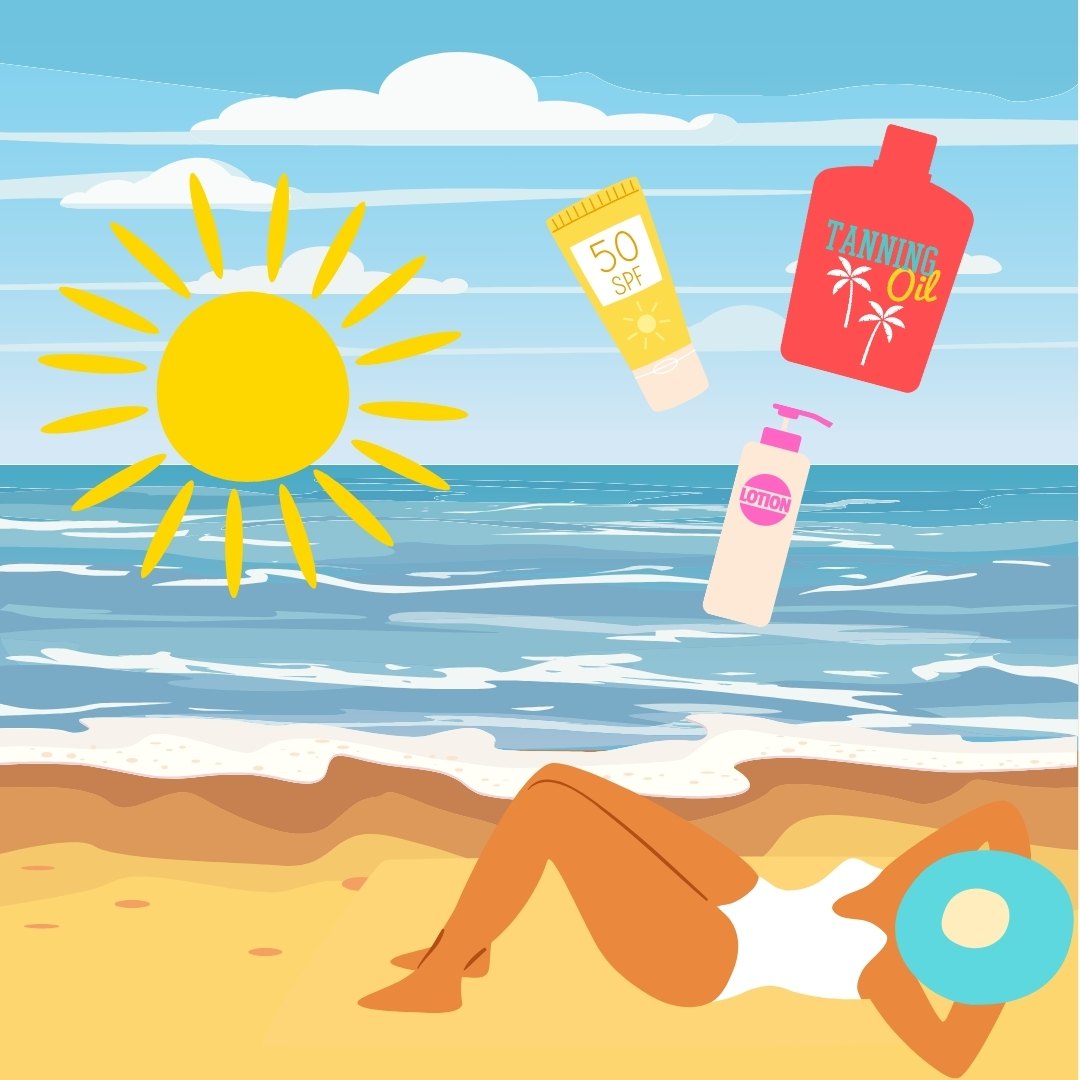As the springtime weather reaches its peak and students feel hints of summer warmth, many begin to wear shorts and tank tops and think about getting a tan.
Students who want to be tan are not alone. According to the National Library of Medicine, 90% of women in the U.S. view tan skin as more aesthetically pleasing and attractive than non-tan skin.
According to the Skin Cancer Foundation, this may stem from historical events that lead to the glorification of tanned skin. Famed designer Coco Chanel’s tan from her yacht vacation in 1923 transformed how society viewed tan skin, creating the western beauty ideal that bronze skin is a sign of wealth and luxury.
Social media platforms like Tiktok and Instagram have provided outlets for this trend to surge in popularity, with users posting about tan lines and sunburns that become tans.
Posts on social media often distinguish between a tan that’s desirable and one that isn’t. A “farmer’s tan” is when one’s shoulder and upper arm are paler than the rest of their arm, and is often portrayed as ugly, while a bikini tan line is often portrayed as trendy and cute.
Students say it can be difficult to meet subjective and constantly changing beauty standards. Junior Sydney Isaac notices the effect tanning culture has on other students.
“I know so many people who hate when they’re pale. They’re like, ‘I’m so pale. It looks so bad.’ That’s just [their] natural color,” said Isaac. “I feel like before high school, when somebody would come [to school] super tan, people would tease them because they were tan. [Now] there’s been this switch up, specifically with teenage girls.”
While many teenagers want a tan, they may overlook the risks. According to the U.S Food & Drug Administration (FDA), when UV rays come in contact with the skin, they damage cells in the epidermis, the outermost layer, while white blood cells repair the damage.
Additionally, skin cells produce more melanin in order to protect the skin from further sun damage and infection. Melanin is the pigment that causes the darkness of the skin that most tanners are trying to achieve. Although the layer of melanin is a form of sun protection, it only produces an SPF of two to four, which is not nearly enough to prevent damage of DNA in the cells of the epidermis. When the DNA of skin cells is damaged, the cells replicate too frequently, which can result in the formation of tumors that potentially turn cancerous.
The cultural perspective of tanning and bronze skin differs among countries. An article on the NIH website says that “pale skin has historically been a standard of beauty in Asia, dating to ancient times, and in many societies today, white skin represents beauty or wealth.”
Junior Alissa Kim recognizes the difference between the US and Korea’s perception of tanned skin.
“I feel like in the US, [people] are wanting to be tan. … Especially in my culture [Korea], being tan is bad and they want you to be as pale as you can be,” said Kim.
There are also alternative forms of tanning. Spray tanning, makeup products and tanning lotions allow for an option with less risk of developing skin cancer because most products use a chemically produced pigment that reacts to the surface acids of the skin.
Freshman Amaya Williams began self-tanning last year and has tried almost every product, including foams, lotions, and spray tans.
“I like getting a spray tan done by a [professional], but that’s really expensive,” said Williams. “If I were to recommend one, it would be a foam you can do yourself.”
Although she prefers the look of natural sun tanning, self-tanning allows someone to achieve their preferred look year round. If one chooses to tan in the sun, it is important to use sunscreen or other sun protectant products to prevent premature aging, skin cancer development and sunburn. It is still possible to tan while wearing sunscreen, and it is safer and healthier for your skin cells.

